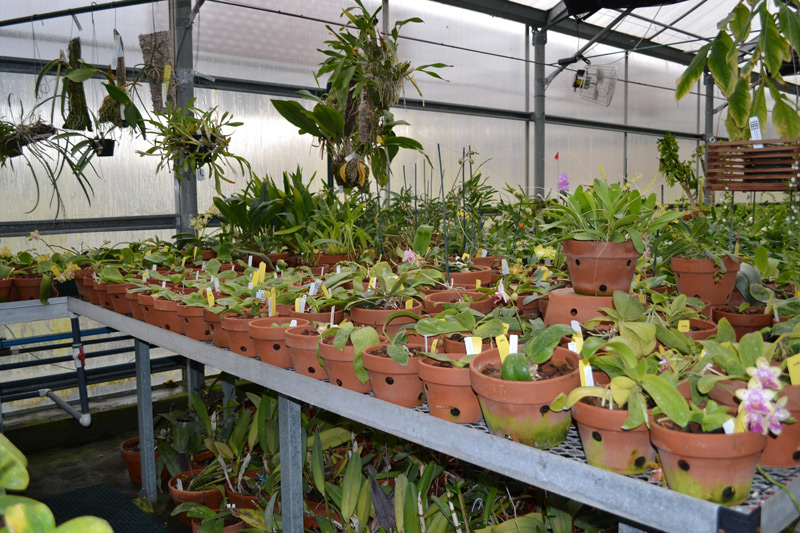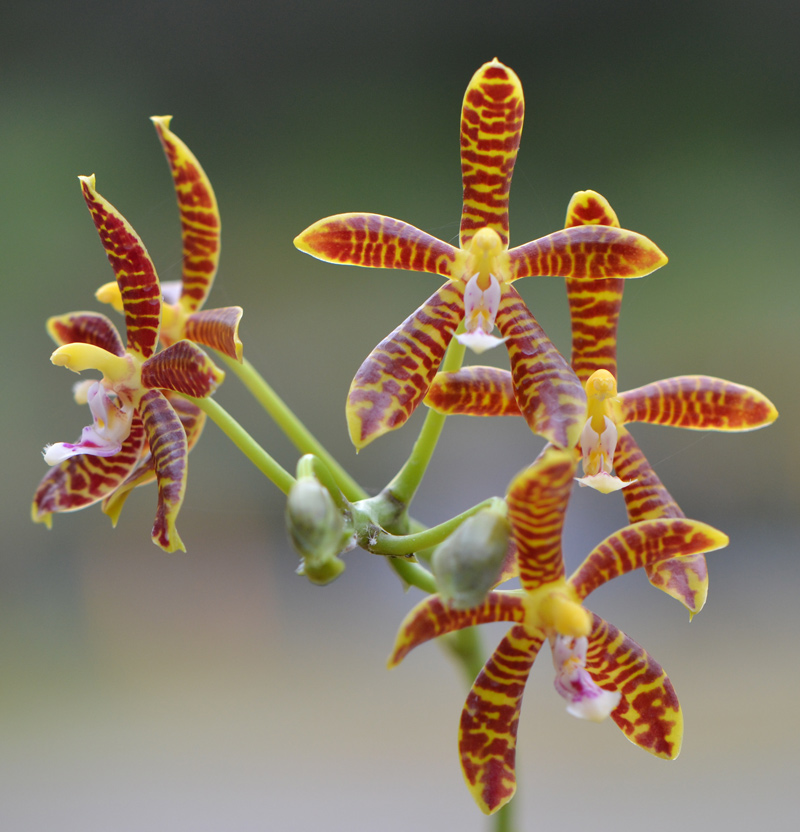The Huntington’s blog takes you behind the scenes for a scholarly view of the collections.
ORCHID COLLECTION | What Moss-tly Kills Phalaenopsis Orchids?
Posted on Wed., Feb. 15, 2012 by
In the past month, you might have bought or received an orchid for Chinese New Year's or Valentine's Day. And maybe you are well aware of your bad history of killing every Phalaenopsis you buy from Trader Joe's, but you are determined this time to keep your precious plant alive.
For every 10 Phalaenopsis plants you buy today, nine of them will be potted up in Sphagnum moss. The orchid industry loves moss because it is very easy to pot and is lighter and cheaper than fir bark. The markets and nurseries adore Sphagnum moss also because it can retain water for a much longer period of time than bark, which means less watering. By the time you bring your orchid home and place it on your kitchen counter, it likely still has plenty of moisture and then some. Most orchid beginners think orchids need a lot of water, subscribing to the premise that since orchids are jungle plants, they must love to be soaked in water. But not all orchids like to be in a soaking wet potting medium; especially Phalaenopsis orchids. Too much water prevents air from reaching the roots. The moss simply retains too much water for the plant to survive. It allows molds to build-up in the root system and kills it slowly over time.
I recommend repotting orchids into bark that is of medium grade. Bark retains less water, which means you have to water it more frequently, but it will give your plant plenty of air and a better chance of surviving. Don't get me wrong. Sphagnum moss is great for orchids, but it doesn't give beginners the leeway they need to get a feel for managing the wetness levels of their new plants. At The Huntington, we stress the importance of air flow to a great extent. We repotted our whole collection of Phalaenopsis orchids into clay pots that have hand-drilled holes that provide better aeration for the plant. Terra cotta pots also dry out a bit quicker than the typical plastic that orchids comes in.
So just because it is an orchid, doesn't mean it loves to soak in water. If you do decide to keep your Phalaenopsis in moss, I would water it once every two weeks. If your leaves do get a bit limp, adjust the watering frequency to a point where it looks content. If you do decide to convert your Phalaenopsis to bark, water the plant itself before leaves start losing some stiffness. It is always better to underwater than to overwater, because once the root system has deteriorated; it is a bit harder to revive. I can guarantee that your survival rate will double as soon as you switch over to bark. Once you get a bit more experienced, you can then experiment with moss. And, when you do make that switch, do not forget to remove every trace of the moss at the roots before it becomes toxic. The acidic level within the moss does increase over time.
Brandon Tam is The Huntington's orchid specialist.

